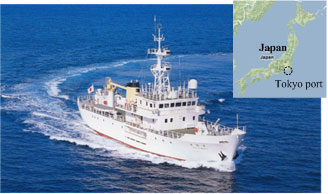|
|
|
Field Observation and STS Lightering with Comparative Analysis Results of Relative Speed
Ship-to-ship (STS) transfer is an operation where two ships are moored together in open waters and transfer the cargo (e.g. crude oil, LPG, LNG, chemicals). A common way to carry out the approach phase is where the ship-to-be-lightered is under way at steering speed. The approach phase is particularly critical in order to avoid steel to steel contact. Operational safety and efficiency requires instrumental measurements and human operation senses. A major objective with ongoing research activity on ship-to-ship operations is to develop a guidance system for the ship navigation officers that can assist in navigating in close proximity, thus contribute to enhance the operational safety and efficiency. A field observation and measurement program has been carried out on board the Shioji Maru conducting an approach towards, and operation alongside, a virtual ship. Data of own ship’s position, speed, course, engine and rudder actions were logged from the Voyage Data Recorder (VDR). Velocity Information GPS (VI-GPS) system, which consists of GPS receivers and PDA (Personal Digital Assistant), is providing precise velocity of a moveable body and was applied to measure relative distances and speeds. The trail, course and speed of own ship are compared with the results of the VI-GPS system. The integration of a guidance system has to fit in the navigation loop on the bridge during an operation. Different logical graphics and visual presentations have to be considered to support the Mooring Master in the decision-making process. The paper analyses a main factor of guidance system for the lightering operation and highlights the maneuverability of the virtual tanker during the approach phase. The correlation with approaching surge, sway speed and own ship’s data for guidance system of STS operations has been analyzed and it is argued which factors have strong effects on STS operations to enhance the operational safety and efficiency.
|
|

